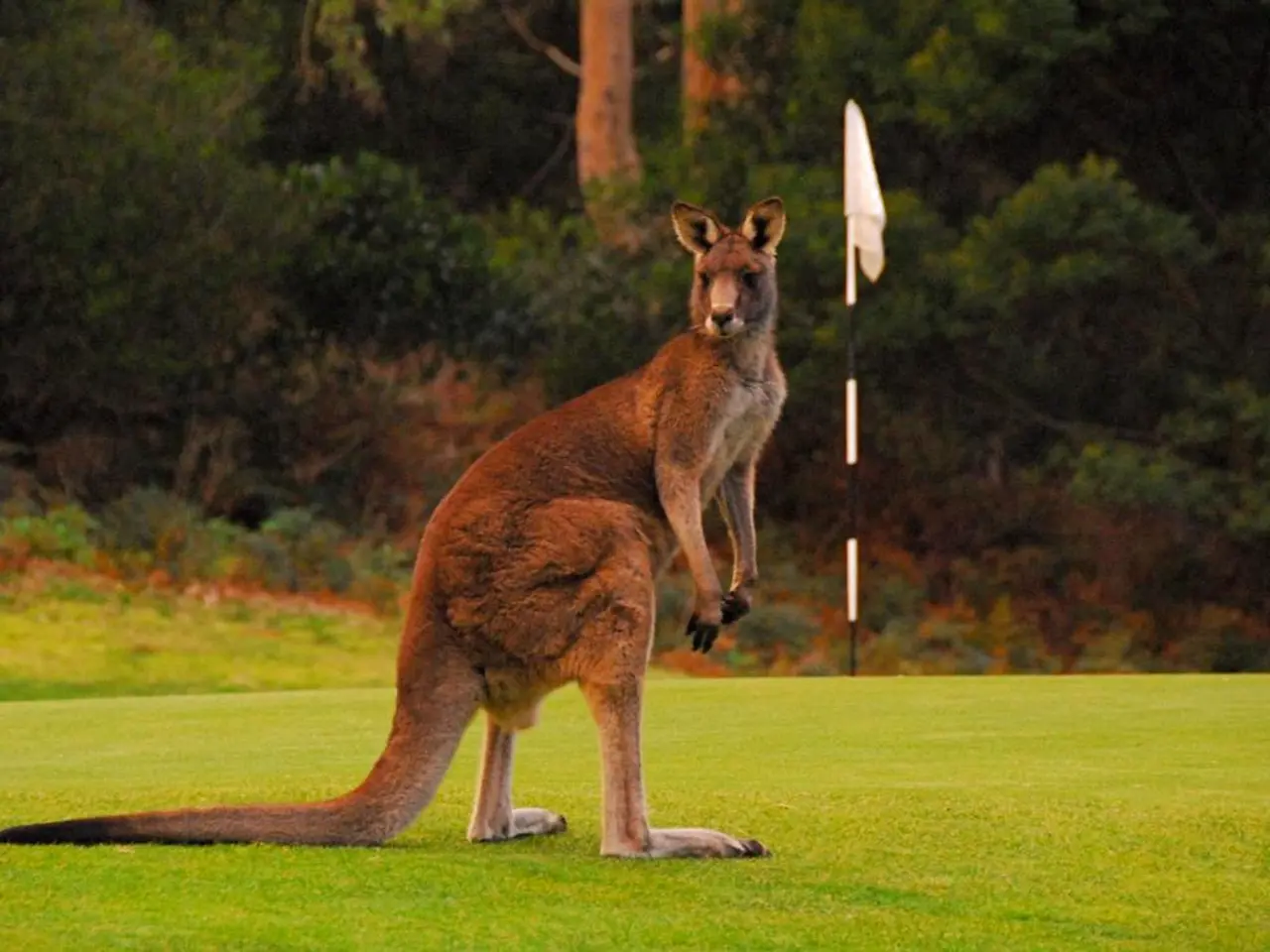Strategies for steering clear of aggressive magpie attacks in Victoria during their active season
========================================================================
As spring approaches in Melbourne and wider Victoria, cyclists may encounter the annual magpie swooping season. Here's a guide on how to stay safe while navigating this period.
Magpies, known for their distinct black and white plumage, are intelligent birds that can recognize up to 100 different faces [1]. During their breeding season, which runs from June to December, male birds may exhibit swooping behaviour, particularly during the six weeks they have chicks in the nest [3].
To avoid and protect yourself from swooping magpies, it's crucial to stay away from birds and nesting areas [4]. Magpies typically defend an area about 50 to 100 meters around their nests, so changing your route during this time is recommended to avoid encounters [1][2][4].
When cycling through known swooping zones, it's best to dismount and walk your bike rather than riding [1][3]. Wearing protective gear such as a wide-brimmed hat and sunglasses can help protect your head and eyes [1][2][4]. Using an open umbrella held above your head while moving through the area can also act as a shield without provoking the birds [1][2].
Riding or walking in groups is another effective strategy, as magpies tend to swoop individuals rather than groups [1][2][3]. It's also important to stay calm and avoid aggressive reactions such as shouting, waving arms, or running, as these behaviours can escalate attacks and cause magpies to remember you negatively [1][2][3].
Some less reliable measures include attaching fake eyes to helmets or wearing conspicuous objects like streamers or brightly colored hats, which might deter some birds but are inconsistent in results [2].
Importantly, do not try to feed or interact aggressively with magpies, as feeding can cause dependency and aggression, and attacking them is illegal and counterproductive [2].
Local councils often mark known swooping hotspots with signs—obeying these and taking detours is a practical way to reduce risk [4]. For instance, cyclists in Tasmania are fortunate, as magpies in this region generally do not swoop [5].
For cyclists in Victoria, RACV Bike Assist offers roadside assistance for bikes or e-bikes [6]. In the event of a damaged bike or being stranded, they can arrange a maxi taxi or other assistance. More information on helmet rules for bikes in Victoria can be found elsewhere [7].
For up-to-date information on known swooping locations, consider using resources like MagpieAlert and the Department of Land, Water and Planning, which publish maps of known swooping locations [8].
In summary, the best approach is to avoid nesting areas during breeding season, dismount and walk your bike through known swooping zones, protect your head, ride in groups, and remain calm and non-confrontational [1][2][3][4]. By following these guidelines, cyclists can safely enjoy their rides during the magpie swooping season in Victoria.
References:
[1] Department of Environment, Land, Water and Planning. (2021). Magpie swooping. https://www.vic.gov.au/what-we-do/nature/animals/wildlife/magpies/magpie-swooping
[2] MagpieAlert. (2024). Magpie swooping facts. https://www.magpiealert.com/facts
[3] Australian Broadcasting Corporation. (2019). Why do magpies swoop? https://www.abc.net.au/science/articles/2019/09/03/4771364.htm
[4] City of Melbourne. (2021). Magpie swooping season. https://www.melbourne.vic.gov.au/community-and-living/parks-and-open-spaces/animal-management/magpie-swooping-season/
[5] Tasmanian Government. (2021). Magpies. https://www.parks.tas.gov.au/explore-our-parks/animal-guide/magpies
[6] RACV. (2021). Bike Assist. https://www.racv.com.au/travel/bike-assist
[7] Victorian Government. (2021). Bicycle helmet standards. https://www.vic.gov.au/integratedtransport/bicycles/bicycle-safety/bicycle-helmet-standards
[8] MagpieAlert. (2024). Magpie swooping locations. https://www.magpiealert.com/locations
During the magpie swooping season, it is advisable to dismount and walk your bike through known swooping areas instead of cycling, as this can help reduce the chances of being swooped upon [1][3]. It's also essential to recognize that wearing protective gear like a wide-brimmed hat and sunglasses can shield your head and eyes while navigating these zones [1][2][4].






